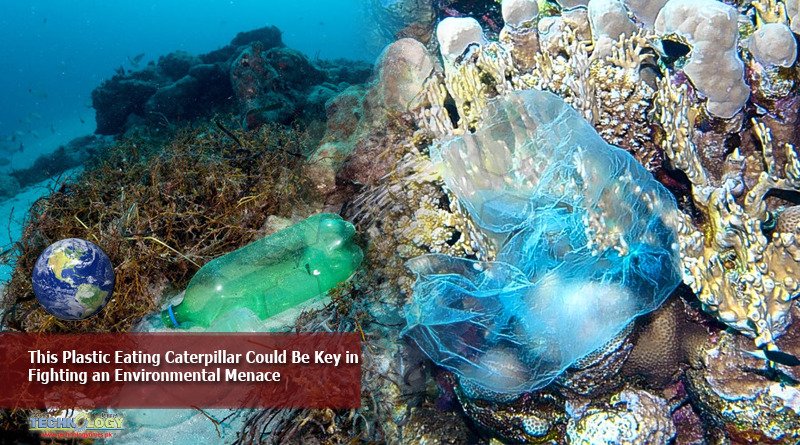It turns out mother nature may have a solution for our massive plastic waste problem. The answer? Galleria mellonella, more commonly known as the ‘great wax moth’ or the ‘honeycomb moth.’ What makes these little guys so special? G. mellonella larvae enjoy chowing down on polyethylene, the most common type of plastic which also happens to be incredibly difficult to breakdown.

In 2017, researchers accidentally discovered that wax worms had eaten holes through plastic bags in which they were being stored. Puzzled, Paolo Bombelli and Christopher Howe placed the critters on polyethylene film in a lab and observed them getting to work on the plastic. The results showed that 100 worms were able to ingest 92 milligrams of the material over a 12-hour period. While it’s not a massive amount, it’s still more than microbes are able to breakdown. What’s more, the caterpillars—sometimes called ‘plastivores’—actually digest the plastic allowing them to turn the material into energy.
“The answer may lie in the ecology of the wax worm itself. They feed on beeswax, and their natural niche is the honeycomb; the moth lays its eggs inside the beehive, where the worms grow to the pupa stage eating beeswax,” say the study’s authors. The results were published in the journal Current Biology.
Because beeswax is comprised of “a highly diverse mixture of lipid compounds,” the worms have adapted the ability to also break plastic down since some of those compounds are similar in their chemical makeup to polyethylene.
Researchers hope that this breakdown process can be analyzed and reproduced as a “biotechnological solution to managing polyethylene waste.”MORE IMPRESSIVE INSECTSBees Are the Math Whizzes of the Insect Kingdom
Even if we wanted to use wax worms in the interim, they can only do so much. According to Discover, wax worms may help offer a solution but they themselves are not the answer. A group of 60 ravenous caterpillars can chomp through a piece of plastic the size of a matchbook. It’s not a big solution, but it’s a small start.
Courtesy: referral link
